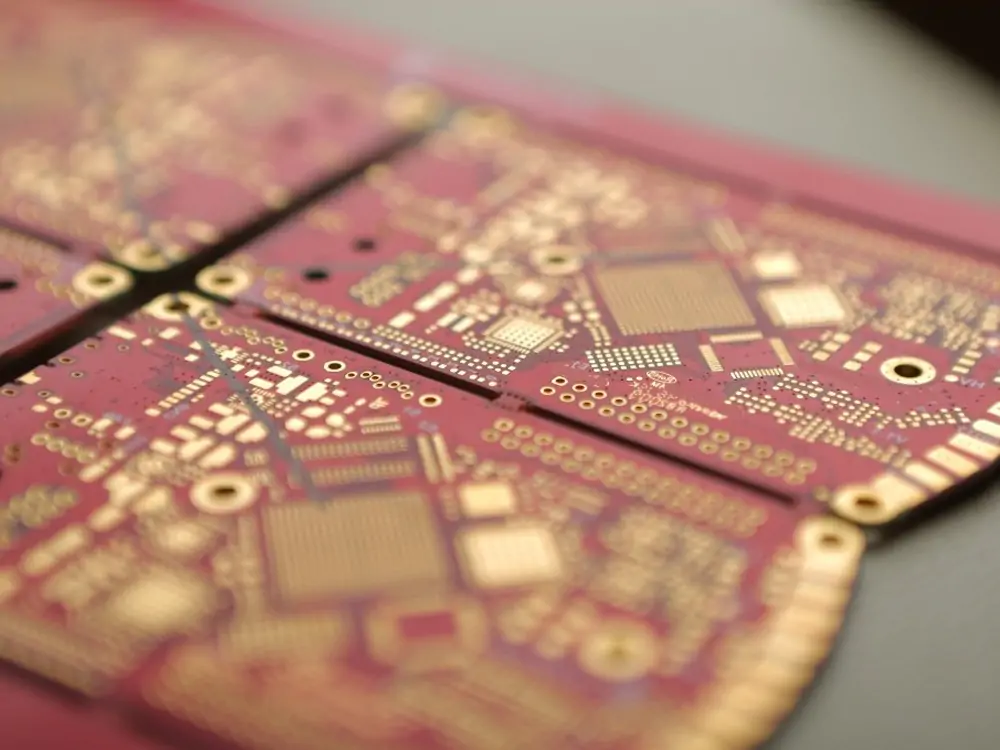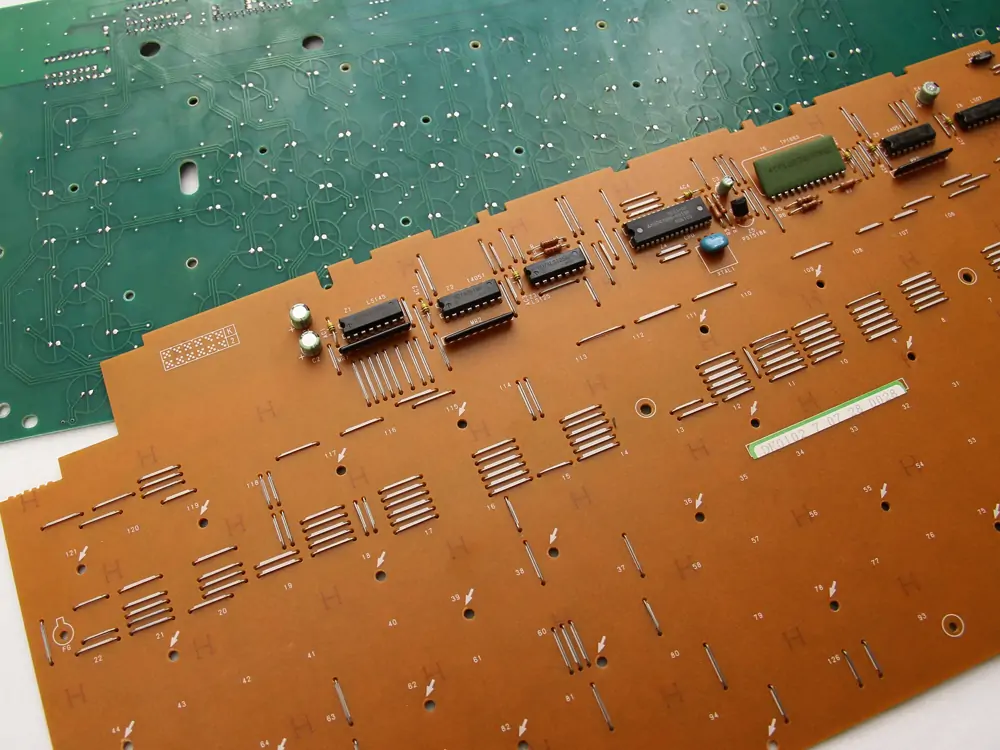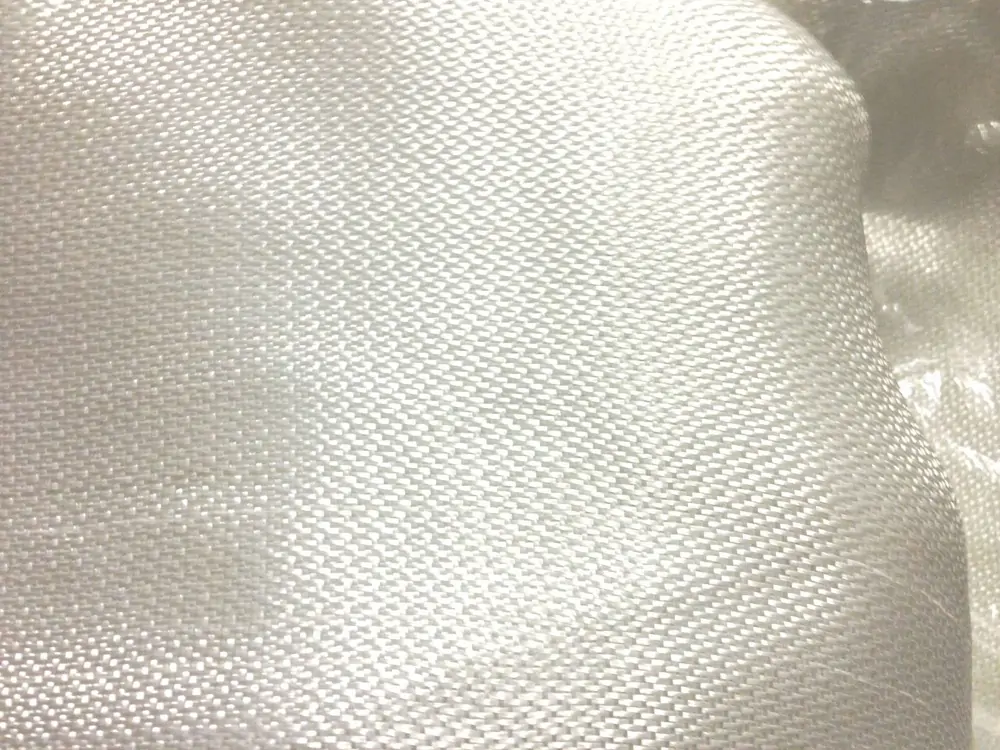Copper clad laminate Definition
Copper-clad laminate refers to a substrate coated with copper foil on one or both sides, typically made by laminating materials such as glass fiber cloth, paper, or plastic with copper foil. In PCB manufacturing, copper-clad laminate is typically used to make circuit connections on the board to provide electrical and mechanical support. The thickness and quality of the copper foil can be customized based on different application requirements.

When discussing copper clad laminate (CCL), printed circuit board (PCB) is usually also mentioned. But in fact, CCL and PCB are different things, although both play important roles in the manufacturing process of PCBs.
A printed circuit board refers to a composite material made by pressing multiple layers of copper-clad laminate together with insulating materials such as glass fiber cloth or polyimide film. The layers of copper foil are separated by insulating materials, and the composite is formed by stacking and pressing them together using a certain lamination process under high temperature and pressure. Printed circuit boards are typically used to make multi-layer PCBs with more circuit layers and higher circuit density.
Most Widely used materials
Laminates are manufactured by curing under pressure and temperature layers of cloth or paper with thermoset resin to form an integral final piece of uniform thickness. The size can be up to 4 by 8 feet (1.2 by 2.4 m) in width and length. Varying cloth weaves (threads per inch or cm), cloth thickness, and resin percentage are used to achieve the desired final thickness and dielectric characteristics.
Available standard laminate thicknesses are listed in ANSI/IPC-D-275.

FR-2: phenolic paper or phenolic cotton paper
It is paper impregnated with a phenol formaldehyde resin. Common in consumer electronics with single-sided boards. Electrical properties are inferior to FR-4. Poor arc resistance. Generally rated to 105 °C.
FR-4: a woven fiberglass cloth impregnated with an epoxy resin.
Low water absorption (up to about 0.15%), good insulation properties, and good arc resistance. Very common. Several grades with somewhat different properties are available. Typically rated to 130 °C.

Aluminum or metal core board or insulated metal substrate (IMS)
It is normally clad with thermally conductive thin dielectric – used for parts requiring significant cooling – power switches, LEDs. It consists of usually single, sometimes double layer thin circuit boards based on e.g. FR-4, laminated on aluminum sheet metal, commonly 0.8, 1, 1.5, 2, or 3 mm thick. The thicker laminates sometimes also come with thicker copper metalization.
Flexible substrates
It can be a standalone copper-clad foil or can be laminated to a thin stiffener, e.g. 50-130 µm
Kapton or UPILEX, a polyimide foil.
This form is used for flexible printed circuits, which is common in small form-factor consumer electronics or for flexible interconnects. Resistant to high temperatures.
Pyralux
It is a polyimide-fluoropolymer composite foil. The copper layer can delaminate during soldering.
Less-often encountered materials:
Flame Retardant Series (FR)
- FR-1, like FR-2, typically specified to 105 °C, some grades rated to 130 °C. Room-temperature punchable. Similar to cardboard. Poor moisture resistance. Low arc resistance.
- FR-3, cotton paper impregnated with epoxy. Typically rated to 105 °C.
- FR-5, woven fiberglass and epoxy, high strength at higher temperatures, typically specified to 170 °C.
- FR-6, matte glass and polyester
Glass Fiber Reinforced Epoxy
- G-10, woven glass and epoxy – high insulation resistance, low moisture absorption, very high bond strength. Typically rated to 130 °C.
- G-11, woven glass and epoxy – high resistance to solvents, high flexural strength retention at high temperatures.Typically rated to 170 °C.
Composite Epoxy Material (CEM)
- CEM-1, cotton paper and epoxy
- CEM-2, cotton paper and epoxy
- CEM-3, non-woven glass and epoxy
- CEM-4, woven glass and epoxy
- CEM-5, woven glass and polyester
Polytetrafluoroethylene (PTFE)
- PTFE ( “Teflon”) – expensive, low dielectric loss, for high frequency applications, very low moisture absorption (0.01%), mechanically soft. Difficult to laminate, rarely used in multilayer applications.
- PTFE, ceramic filled – expensive, low dielectric loss, for high frequency applications. Varying ceramics/PTFE ratio allows adjusting dielectric constant and thermal expansion.
- RF-35, fiberglass-reinforced ceramics-filled PTFE. Relatively less expensive, has good mechanical properties, and good high-frequency properties.[16][17]
Alumina, a ceramic.
Hard, brittle, very expensive, very high performance, good thermal conductivity.
Polyimide
It is a high-temperature polymer. Expensive, high-performance. Higher water absorption (0.4%). It can be used from cryogenic temperatures to over 260 °C.
